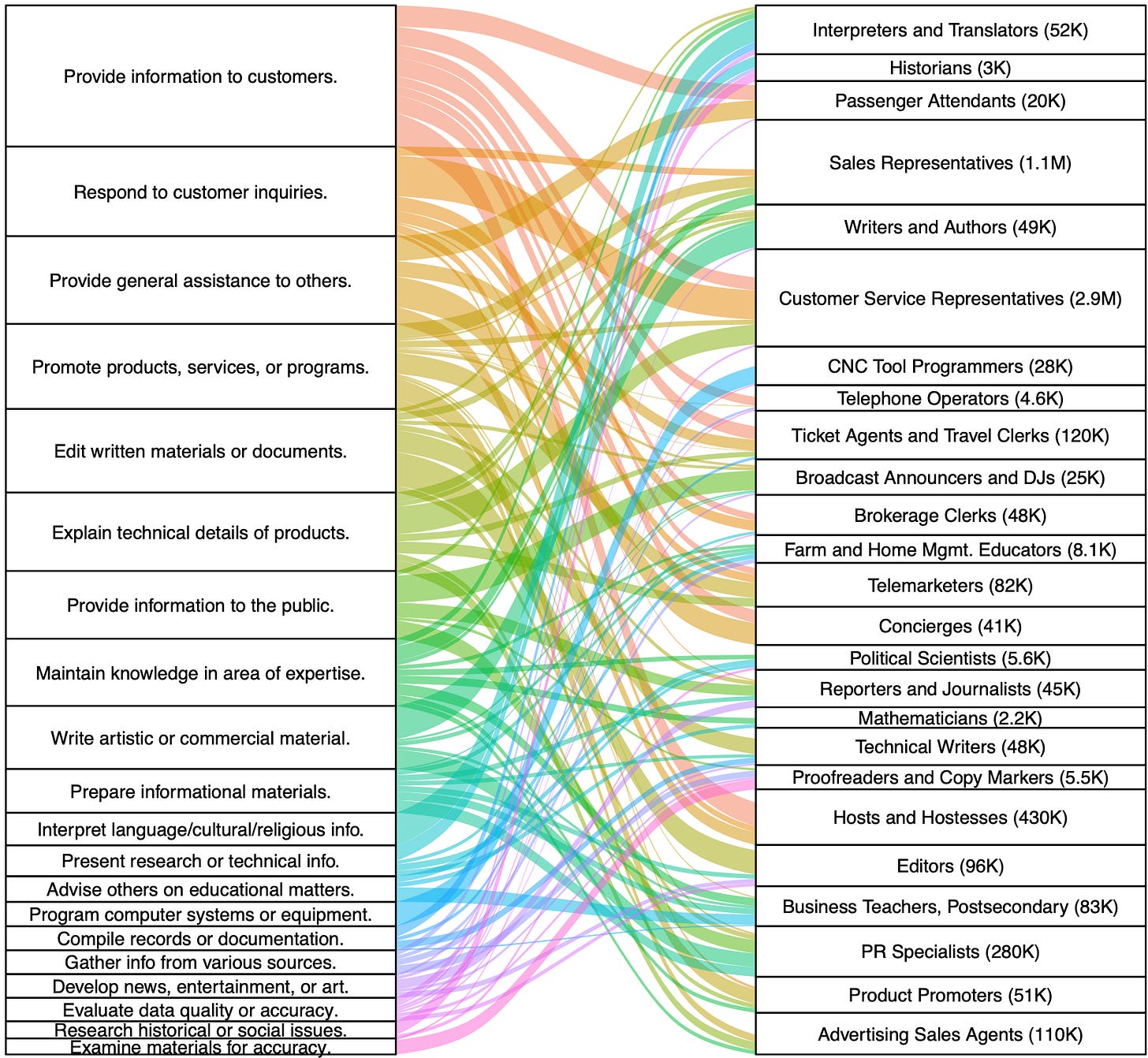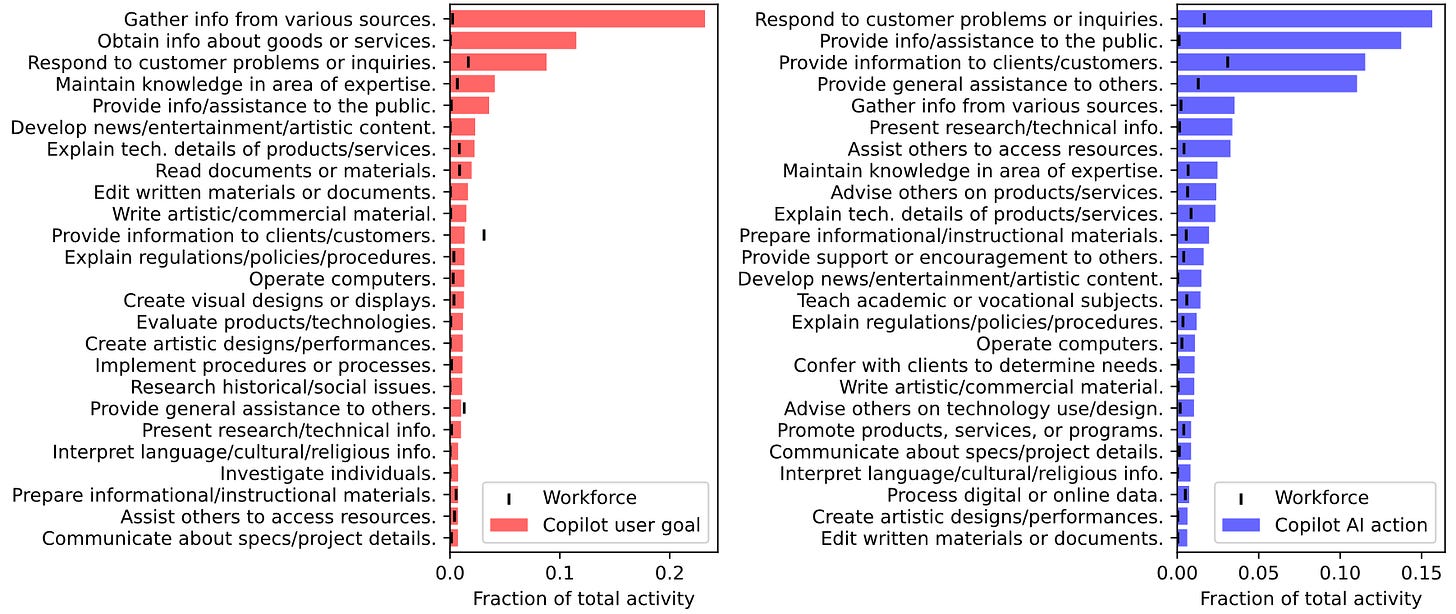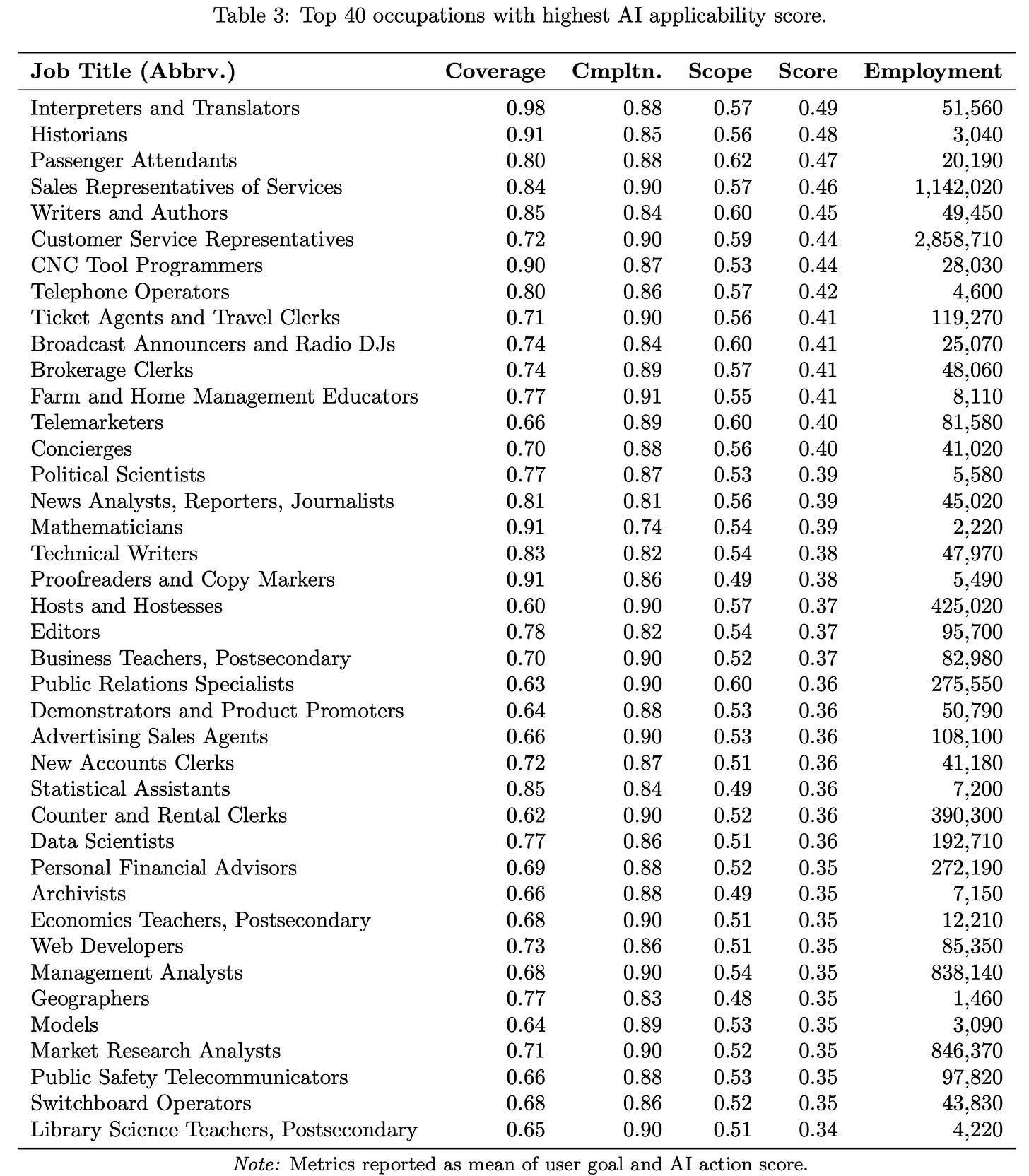AI Utilization at Work Today: Insights from 200,000 Real Conversations (in 2024)
A new Microsoft Research study analyzed 200,000 Bing Copilot conversations to understand how people are really using AI in their daily work. The findings uncover interesting details on AI's workplace impact and reveal surprising patterns about which jobs and tasks are being transformed today.
AI as Ultimate Workplace Research Assistant
The most striking finding? By end of 2024, AI is playing a critical support role to workers already. Though it’s important to note that in 40% of conversations, what users seek help with and what the AI actually does are completely different activities.
Users primarily come to AI for three things:
Information gathering (23% of all usage) - researching topics, finding data, understanding concepts
Writing and editing - creating content, refining documents, improving clarity
Obtaining specific information - product details, procedural guidance, technical specifications
Meanwhile, AI acts primarily as:
Information provider and explainer
Teacher and trainer
Technical advisor
Content editor
This asymmetry is crucial: when you ask AI to help solve a computer problem, you're doing "troubleshooting" while the AI is doing "technical support." The human remains the problem-solver; AI is the knowledgeable assistant.
Which Jobs Are Most Impacted Right Now
The study calculated an "AI applicability score" for every occupation based on actual usage patterns. The results are surprising:
Highest AI Impact (Today):
Interpreters and Translators - 98% task overlap with AI capabilities
Historians - 91% overlap (research, document analysis, writing)
Customer Service Representatives - 2.9 million workers affected
Sales Representatives - 1.1 million workers using AI for product information and customer communication
Writers and Authors - Heavy use for editing, research, content generation
Knowledge work dominates, but not always in expected ways:
Brokerage Clerks use AI for financial data gathering and client communications
Travel Agents leverage it for itinerary planning and destination research
PR Specialists employ AI for content creation and media monitoring
Mathematicians use it for problem-solving and theoretical exploration
Minimal AI Impact (Currently):
Physical laborers: Dishwashers, roofers, housekeeping staff
Machine operators: Water treatment plant operators, truck drivers
Healthcare support: Nursing assistants, orderlies (though doctors increasingly use AI for diagnosis)
The Tasks Where AI Excels vs. Struggles
The study measured task completion rates and user satisfaction to identify where AI truly helps:
High Success Activities (80%+ satisfaction):
Researching healthcare information
Language translation and interpretation
Purchasing decisions and product evaluation
Legal and regulatory research
Writing and document editing
Explaining technical concepts
Low Success Activities (50-60% satisfaction):
Visual design and artistic creation
Data analysis requiring mathematical principles (changing with Claude Code)
Creating decorative objects or displays
Complex financial calculations (changing with Claude Code and Anthropic’s new Assistants for Finance Use Cases)
Operating specialized equipment
Implications for the Workplace
The data suggests three key implications:
Today, AI amplifies existing skills rather than replacing them. Customer service reps use AI to find information faster, not to eliminate their roles. Writers use it to overcome writer's block, not to generate entire works.
Communication-heavy roles see the most transformation. Any job involving explaining, teaching, providing information, or helping others can leverage AI as a "force multiplier."
Physical and analytical extremes remain human domains. Jobs requiring physical presence or complex mathematical/visual analysis show minimal AI penetration.
Looking Forward
This study provides a snapshot of AI usage in 2024, but patterns are already evolving. I expect AI will transform not just HOW work gets done but also WHETHER humans do it (not quite the case today).
For now, the message is clear: AI is already indispensable today when used as a highly capable assistant for information gathering, writing, and communication tasks. Understanding these strengths - and limitations - is crucial for staying relevant in an AI-augmented workplace.
The full study, "Working with AI: Measuring the Occupational Implications of Generative AI," provides detailed breakdowns by occupation and task type for those seeking deeper insights into their specific field.






